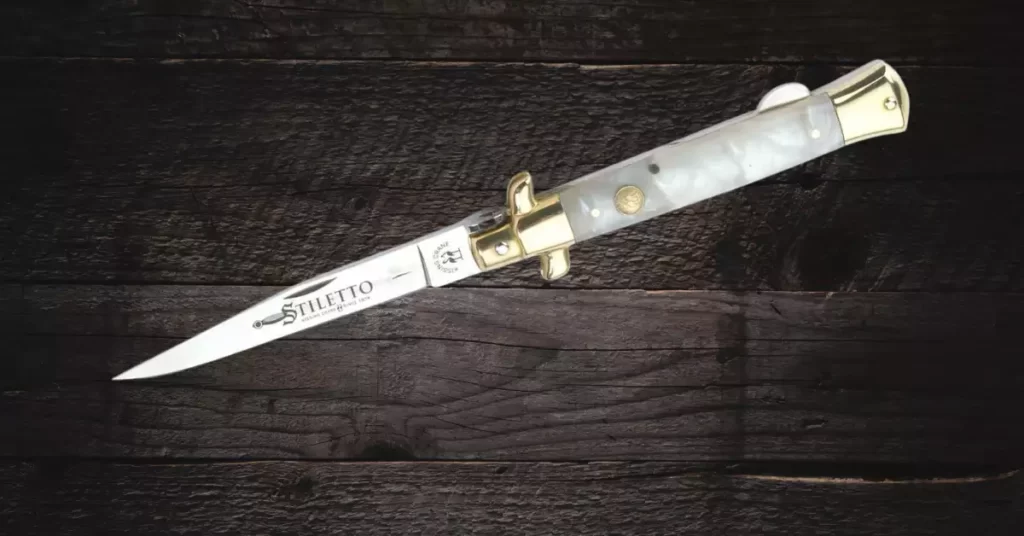Knives have been essential tools for centuries, but they’re more than just utilitarian objects. They carry stories, history, and artistry within their intricate designs.
Kissing Crane knives, in particular, have long been sought after by collectors for their fine craftsmanship and quality. But how can you determine the age of these exquisite blades?
In this guide, we’ll dive into the world of Kissing Crane knives, reveal the secrets of their dating system, and help you accurately pinpoint the production year of your prized collectible.
A Brief History of Kissing Crane Knives
The Origin and Development
Kissing Crane, also known as Robert Klaas, is a German knife manufacturer that has been producing high-quality knives since 1834.
The company’s trademark symbol, the kissing cranes, has become synonymous with excellence in the cutlery world.
Reputation and Collectibility
Kissing Crane knives are cherished by collectors due to their impeccable craftsmanship, variety of designs, and the use of premium materials.
With a rich history spanning over 180 years, these knives have become a staple in the knife-collecting community.
The Kissing Crane Dating System Explained
Decoding the Tang Stamp
One of the most reliable ways to date a Kissing Crane knife is by examining the tang stamp. The tang stamp is found on the knife’s blade, near the handle, and typically includes the company’s name, logo, and other essential information.
Evolution of Tang Stamps Over Time
Kissing Crane has altered its tang stamps over the years, which can be used to narrow down the production period. Some key changes in tang stamps include:
- Pre-1950s: The company’s name, “Robert Klaas,” along with the kissing cranes logo.
- 1950s-1970s: The name “Kissing Crane” in script, accompanied by the kissing cranes logo.
- 1980s-present: The inclusion of the word “Germany” or “Solingen” (a city renowned for its knife-making tradition), along with the company’s name and logo.
Identifying Limited Edition and Anniversary Knives
Kissing Crane often releases limited edition or anniversary knives, featuring unique tang stamps or engravings to commemorate the occasion.
Look for specific details like dates or unique designs to help you pinpoint the production year.

Examining Other Knife Features
Blade Etching and Handle Materials
In addition to the tang stamp, Kissing Crane knives often feature blade etchings or specialized handle materials that can provide clues to their age.
For example, older knives may have handles made of materials like bone, stag, or buffalo horn, while newer models might use synthetic materials.
Comparing to Known Models and Variations
Consulting reference books, online resources, and forums dedicated to Kissing Crane knives can help you compare your knife to known models and variations.
This can offer valuable information about the production period and distinguishing features of your knife.
What Type of Knives Are Branded As Kissing Crane?
Kissing Crane offers a wide range of knife styles, including:
- Traditional pocket knives
- Hunting knives
- Fixed-blade knives
- Kitchen knives
- Commemorative and limited edition knives
Each knife type is crafted with the same attention to detail and quality materials that Kissing Crane is known for.
Are Kissing Crane Knives Good?
Kissing Crane knives are renowned for their excellent craftsmanship, use of high-quality materials, and unique designs.
Their reputation for producing reliable, long-lasting knives has made them a favorite among collectors and knife enthusiasts alike.
Challenges when Dating a Kissing Crane Knife
While the tang stamp is the most reliable method for dating a Kissing Crane knife, some challenges may arise:
- Faded or worn tang stamps: Over time, tang stamps can become difficult to read, making it harder to determine the knife’s age.
- Reproductions or fakes: Counterfeit Kissing Crane knives may have inaccurate or misleading tang stamps.
- Inconsistencies in production: Sometimes, Kissing Crane may have used older blade stock with outdated tang stamps, leading to confusion when dating the knife.
FAQs
Are Kissing Crane knives still made in Germany?
While Kissing Crane knives originated in Germany, some production has shifted to other countries like Italy and China.
The tang stamp on the knife will provide information about the country of origin. Many collectors still seek out the German-made Kissing Crane knives for their higher quality and craftsmanship.
How can I care for my Kissing Crane knife to preserve its value?
Proper care is crucial for maintaining the value of your collectible knife. Keep your knife clean, dry, and free of rust. Store it in a protective case to prevent damage and avoid using it for heavy tasks that might cause wear.
How can I authenticate a Kissing Crane knife?
Authenticating a Kissing Crane knife can be done by examining the tang stamp, blade etchings, handle materials, and overall craftsmanship.
Comparing the knife to known models and variations, as well as seeking advice from experienced collectors or experts, can also help in the authentication process.
Final Thoughts
Dating a Kissing Crane knife can be an exciting journey into the world of knife collecting.
By examining the tang stamp, blade etchings, and handle materials, as well as comparing your knife to known models and variations, you can unlock the history and value of your prized collectible.
With proper care and attention to detail, your Kissing Crane knife will remain a cherished possession for years to come.
